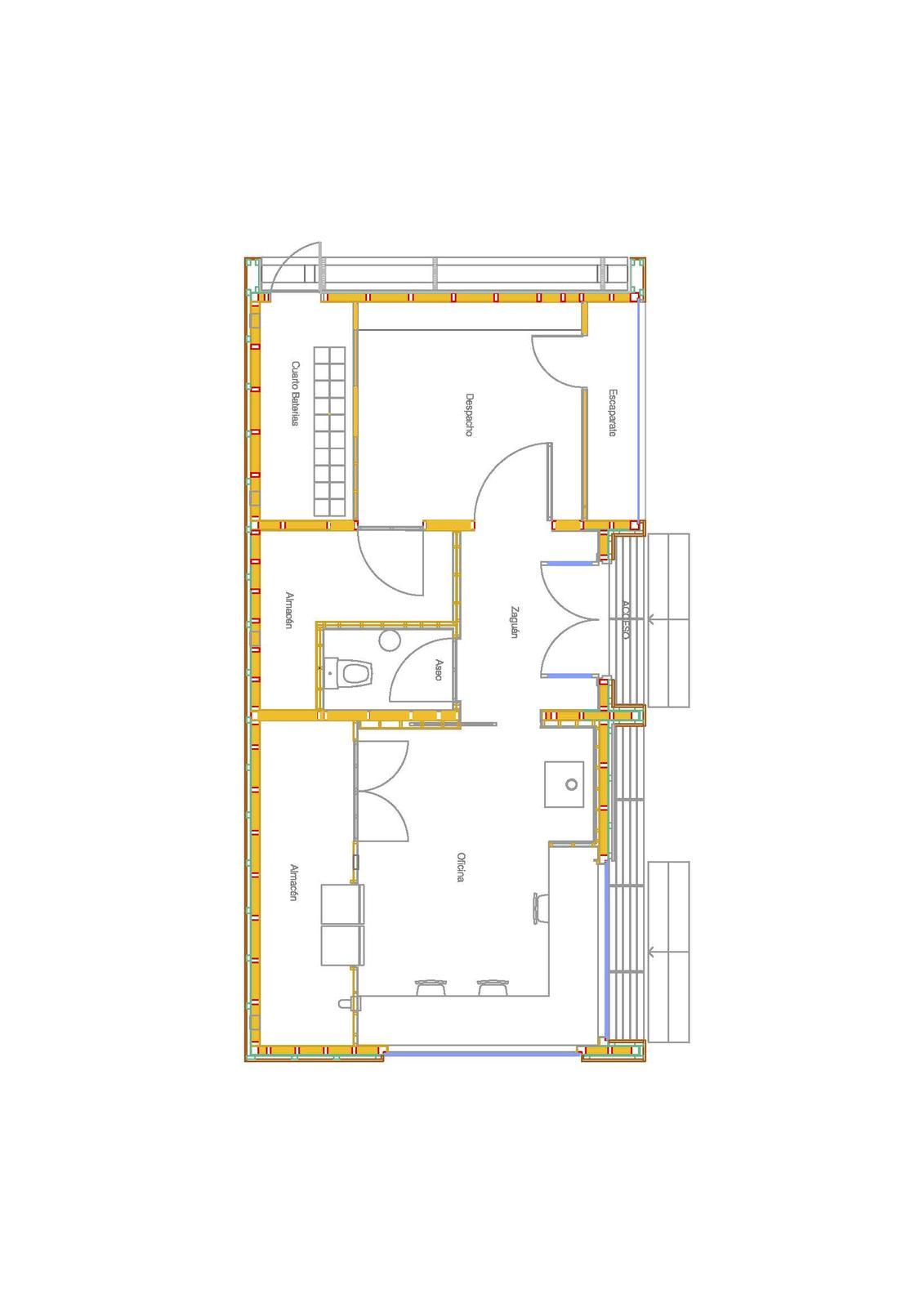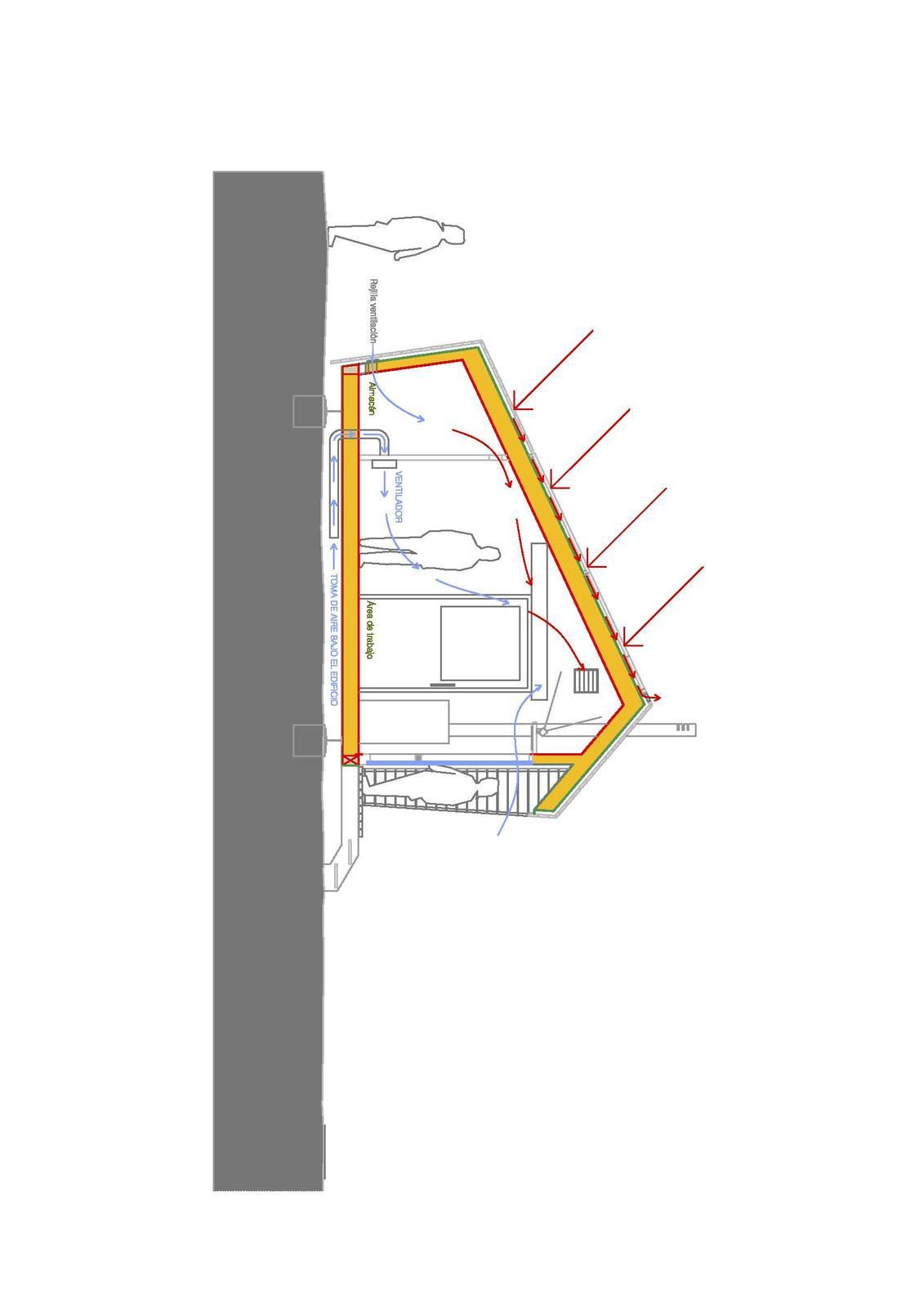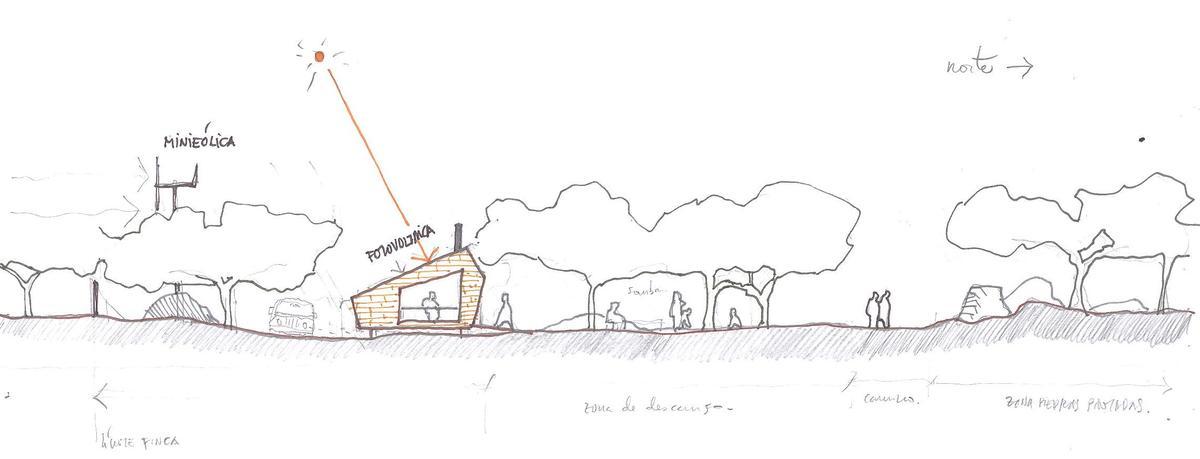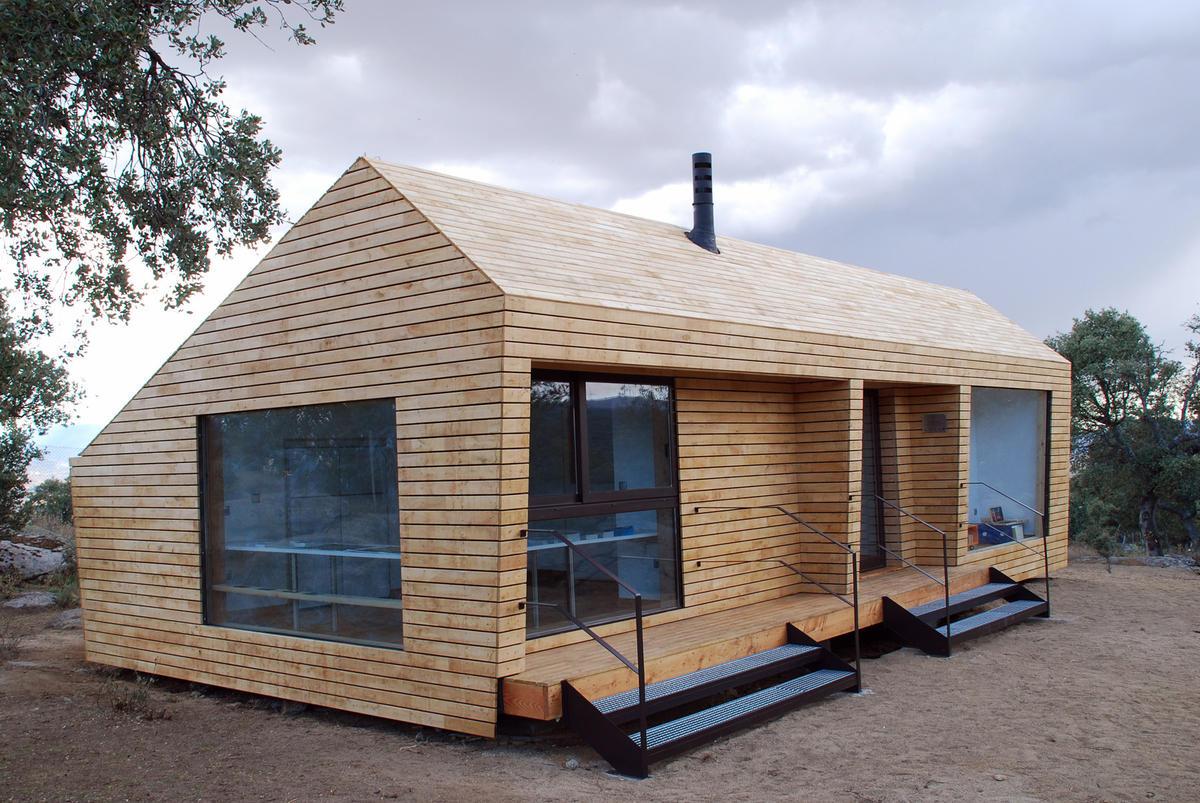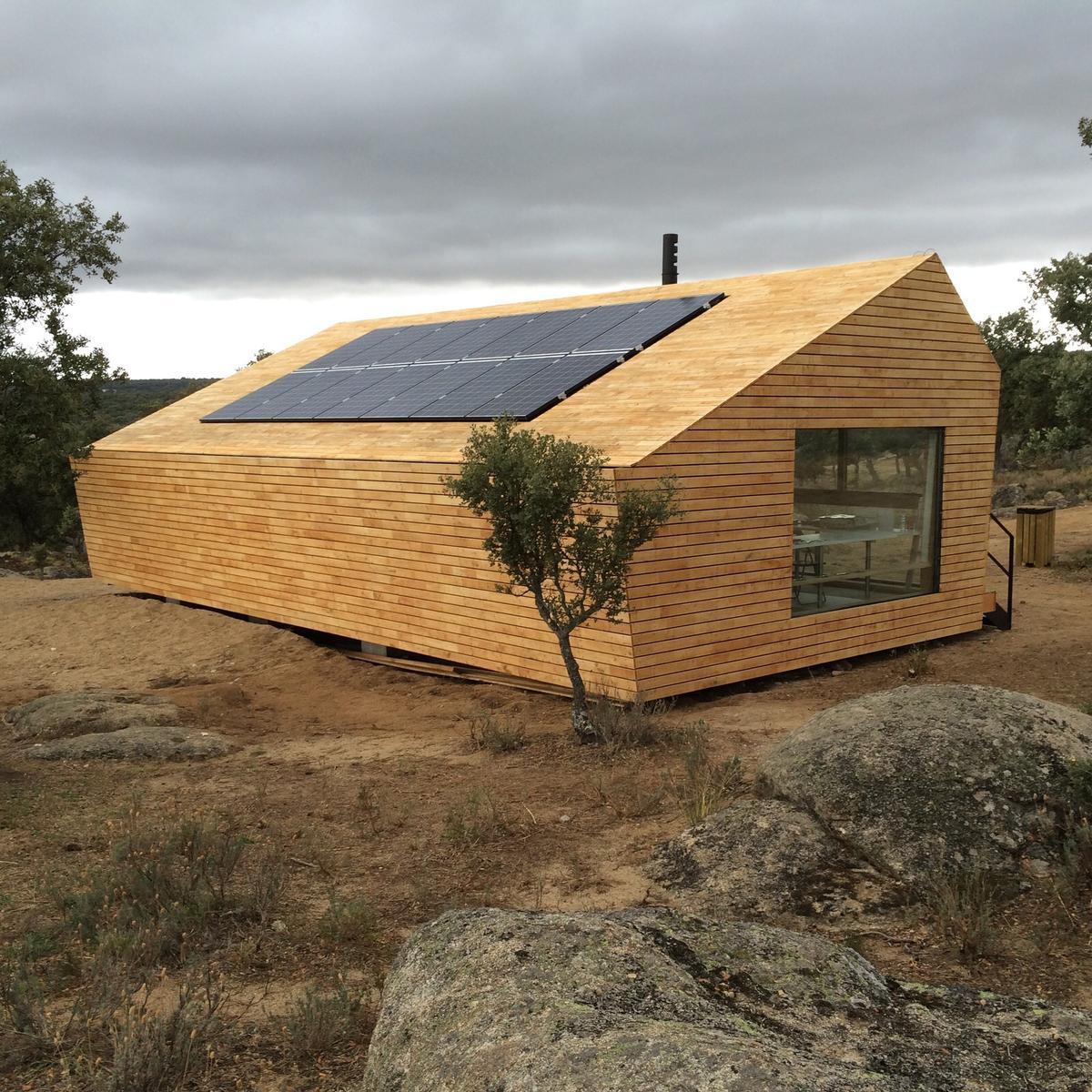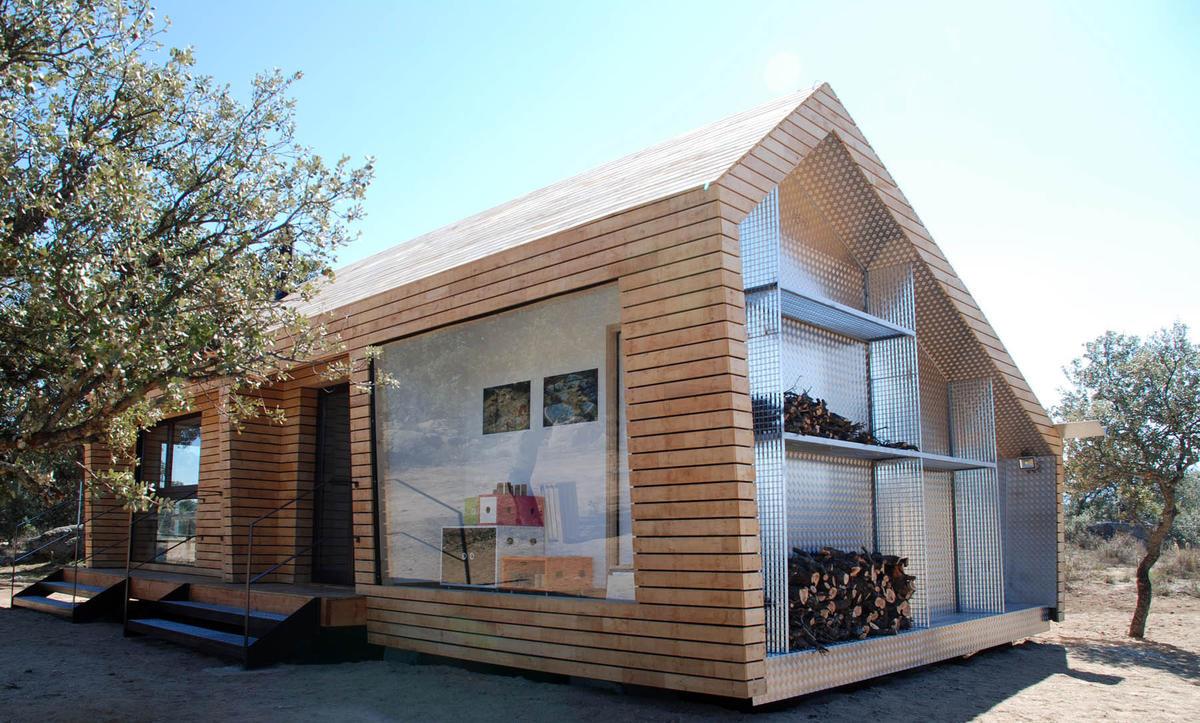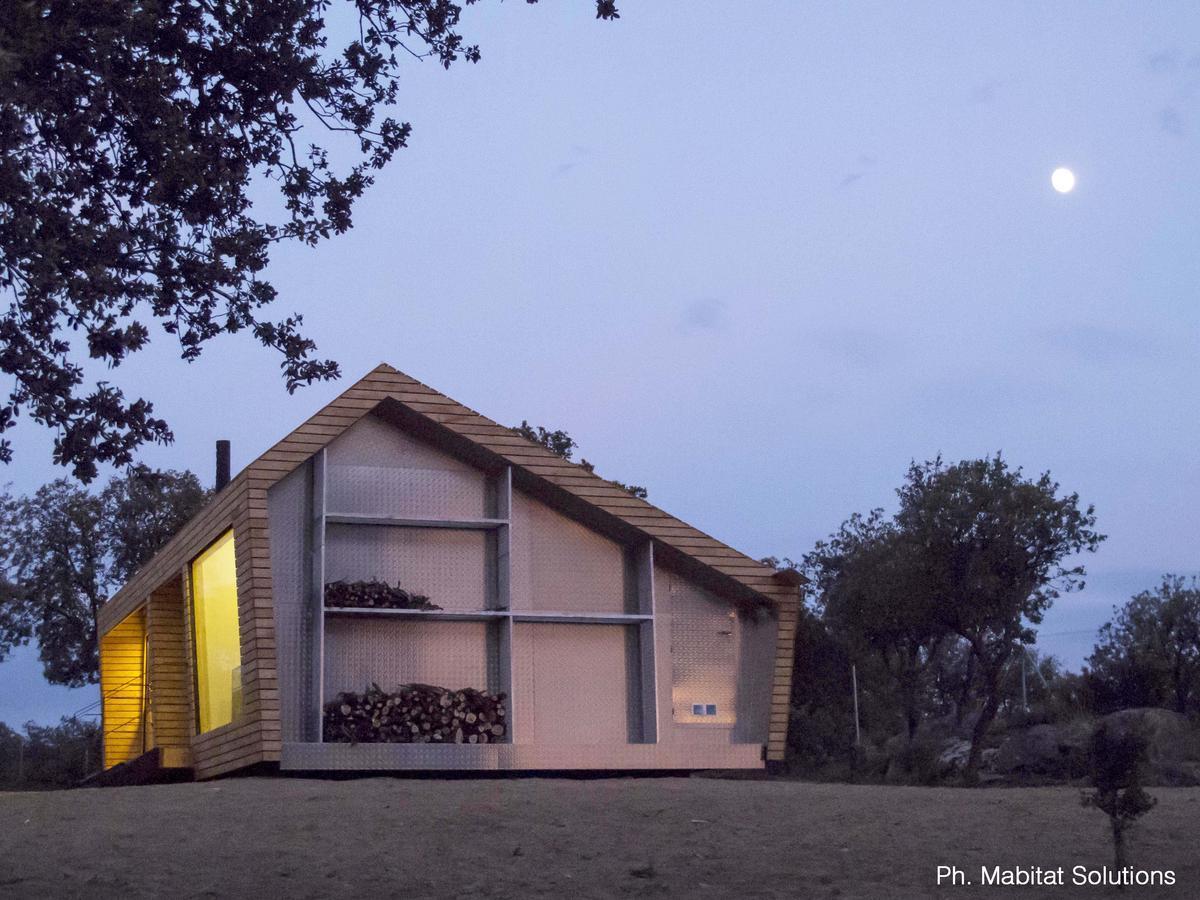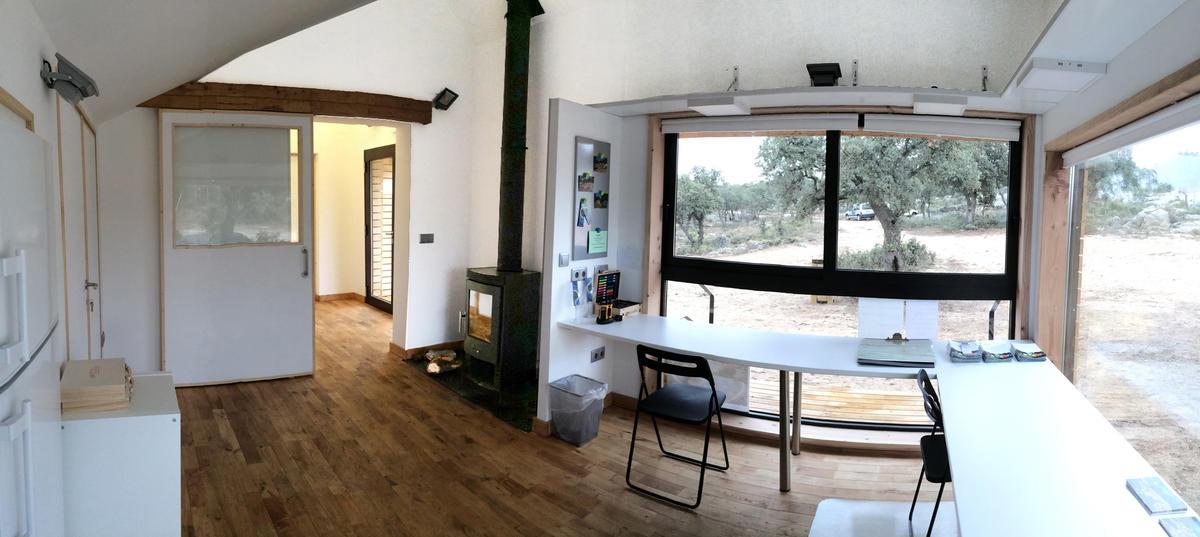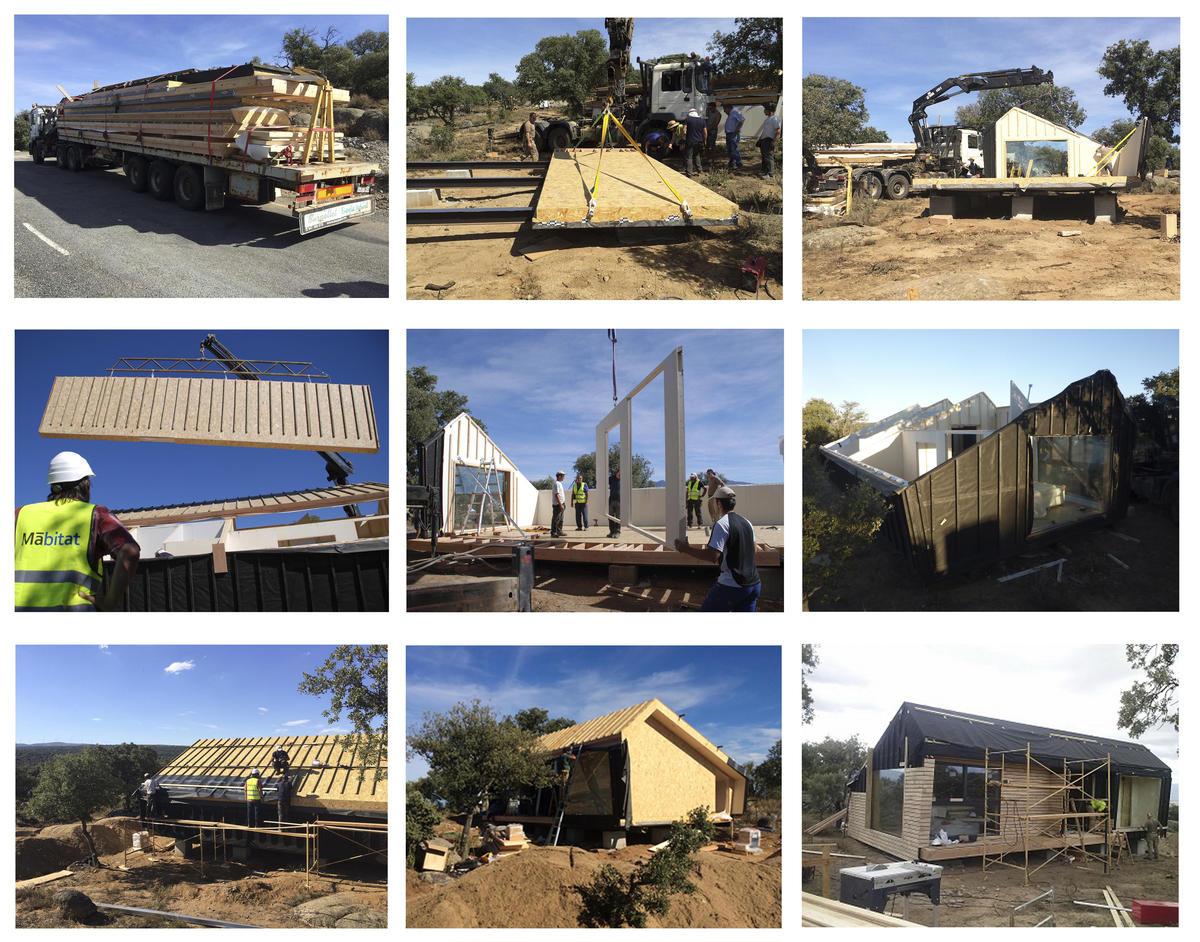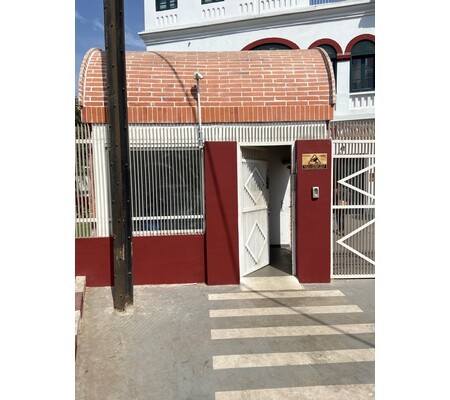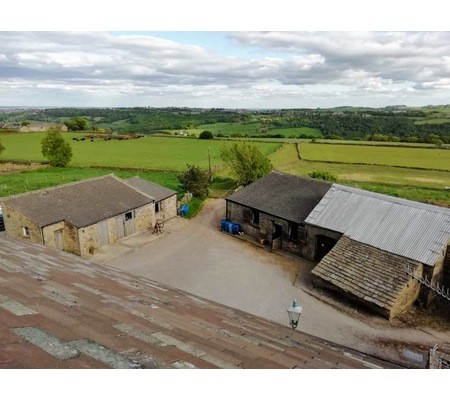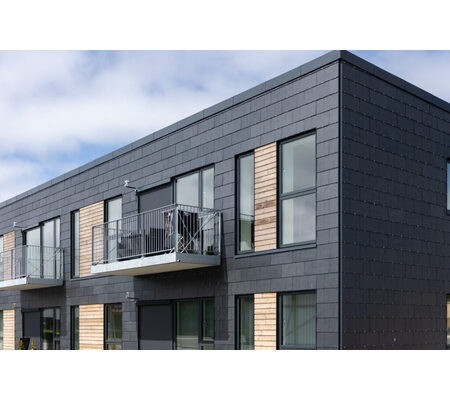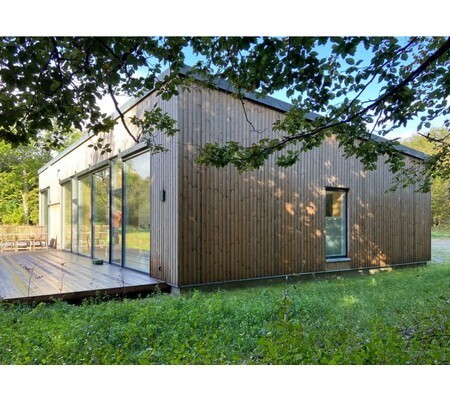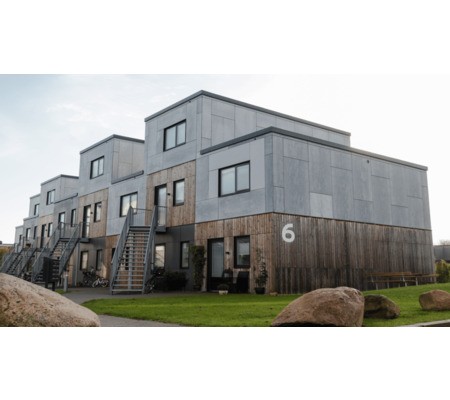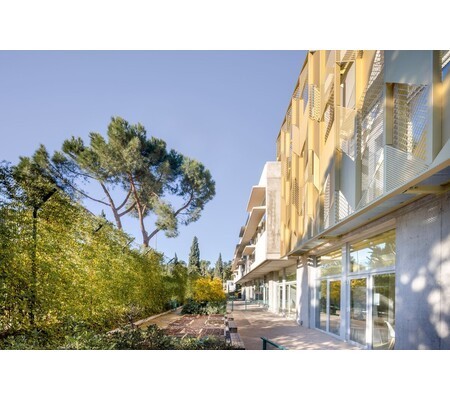Information Point for the Ibarrola Exhibition in Garoza
Last modified by the author on 20/06/2016 - 18:54
New Construction
- Building Type : Museum
- Construction Year : 2015
- Delivery year : 2015
- Address 1 - street : 05530 MUñOGALINDO (ÁVILA), España
- Climate zone : [Csa] Interior Mediterranean - Mild with dry, hot summer.
- Net Floor Area : 50 m2
- Construction/refurbishment cost : 92 943 €
- Number of Visitor : 2 Visitor
- Cost/m2 : 1858.86 €/m2
-
Primary energy need
34 kWhpe/m2.year
(Calculation method : RD: 47/2007 )
The Ibarrola Project in Garoza aims to recover an existing but underused cultural facility, to turn it into a cultural tourism facility that energizes the economy and culture of the province of Avila.
La Dehesa de Garoza is a mountain of oaks with livestock farm located in the town of Muñogalindo, opposite the Amblés Valley. Between 2005 and 2010 the Basque artist Agustin Ibarrola, invited by the owner of the Dehesa, made an artistic intervention painting 115 granitic rocks in an area of 11 hectares. This work has remained almost unknown until September 2015 when the Asocio Foundation of Avila opened the project, after signing an agreement with the artist, the owner of the property and the City Council, which undertook to carry out the work to adapt the pastureland to visitors and to manage the equipment. The intervention consisted in bringing a new driveway from the road, building a new access for livestock, hurdling the farm where the painted rocks are, building the Information Point and Foundation staff office, design and execute museology and perform the communication plan.
Sustainability in its four approaches has been the basis for intervention in such a sensitive environment as the existing one, the cultural component being especially important when dealing with the recovery of an artistic work, but also because it value cultural elements and identity of the place, such as extensive beef cattle, the pasture as landscape modified by man and other existing cultural resources in the Valley, as vetones forts and cave paintings. In addition, intervention integrates two existing resources in the village for a few years, the Cultural Hall located beneath the town hall and the gazebo. The project aims to revitalize the culture of the province, for its ability to attract visitors interested in culture, their potential synergies with other resources and schedule of activities. It also is expected to contribute to economic and social development of the region, affecting sectors such as hotel, rural tourism, catering, tourism businesses and trade of local products.
Regarding the environmental aspect has followed the approach to change as little as possible, both physically and visually the pasture and artistic work, keeping the livestock use, so that it remains with the use and physiognomy who found the artist before intervening. in this sense, they have avoided earthworks which would have altered the topography and natural runoff have been used local materials, existing energy prey in place and most of the waste is recycled in situ.
Following this line, the building Information Point wooden construyeen, prefabricated in workshop and then assembled in situ, slightly elevated above the ground to avoid changing the natural environment in its construction phase, use and removal, as a building perched on the floor. Laenvolvente has high levels of insulation and airtightness and the outer skin of the building is wooden flooring chestnut 90x20mm type S1, battens, forming a ventilated chamber that protects you from the sun and aging naturally no longer leading treatment chemical.
From the energy point of view the building is self-sufficient and local energy supplies, sun and biomass. By 14 photovoltaic panels that charge 24 batteries, system that allows a range of 2 days sun sinradiación, all electricity needs are covered. Ductable heating is a stove with built-in fan that uses the own wood of pruning of the pasture as biomass.
See more details about this project
http://ibarrolaengaroza.org/proyecto/arquitectura/http://www.sostenibilidadyarquitectura.com/blog/proyecto-socios-edificio-para-punto-de-informacion-del-proyecto-ibarrola-en-garoza/
Data reliability
Self-declared
Stakeholders
Developer
Fundación Asocio de Ávila
Iban Jaén
http://www.fundacionasocio.com/Local Action Group project sponsor.
Designer
Iban Jaén Rodríguez-Carrascal
c/ Luis Larraínza, 1 28002 Madrid. T: 91 4163497 [email protected]
http://www.ecoolstudio.comAuthor of the project and construction manager
Others
Daniel Carpio Hernández
technical architect, director of the execution of the work.
Contractor
Mabitat Solutions S.L.
Pablo Sabin - Polígono Industrial San Andrés de Soria. Parcela 12. 42163 (Almarza) SORIA
http://www.mabitat.es/Construction company specializing in wood works
Contracting method
General Contractor
Owner approach of sustainability
The Asocio Ávila Foundation has been financing and advising public and private developers for 15 years. Their aim is to develope rural areas of their counties. This social, economic and cultural approach is accompanied by a special care for the environment and energy efficiency of the projects as a key aspect to their survival and the survival of the environment in which they are implanted.
Architectural description
In the overall performance and the design of the building, the approach was to change as little as possible, both physically and visually the pasture and artistic work, keeping the livestock use, so that it remains with the use and physiognomy he found the artist before intervening. In this sense, they have avoided earthworks which would have altered the topography and natural runoff. Local materials have been used, existing energy prey in place and most of the waste is recycled in situ. Following this line, the building Information Point is built in wood, prefabricated in workshop and then assembled in situ, slightly elevated above the ground to avoid changing the natural environment in its construction phase, use and disassembly, as a building perched on the floor. The envelope has high levels of insulation and airtightness and the exterior of the building is wooden flooring chestnut 90x20mm type S1, battens, forming a ventilated chamber that protects you from the sun and aging naturally since no chemical treatment was performed. From the energy point of view the building is self-sufficient and local energy supplies, sun and biomass. By 14 photovoltaic panels that charge 24 batteries, system that allows a range of 2 days without sunlight, all electricity needs are covered. Ductable heating is a stove with built-in fan that uses the own wood of pruning of the pasture as biomass.
Energy consumption
- 34,00 kWhpe/m2.year
- 81,00 kWhpe/m2.year
- 75,00 kWhfe/m2.year
Envelope performance
- 0,29 W.m-2.K-1
- 0,48
Systems
- Wood boiler
- Individual electric boiler
- No cooling system
- Natural ventilation
- Nocturnal ventilation
- Solar photovoltaic
- Wood boiler
- 100,00 %
GHG emissions
- 20,00 year(s)
Water management
- 16,00 m3
Comfort
Product
Chestnut wood facade and cover
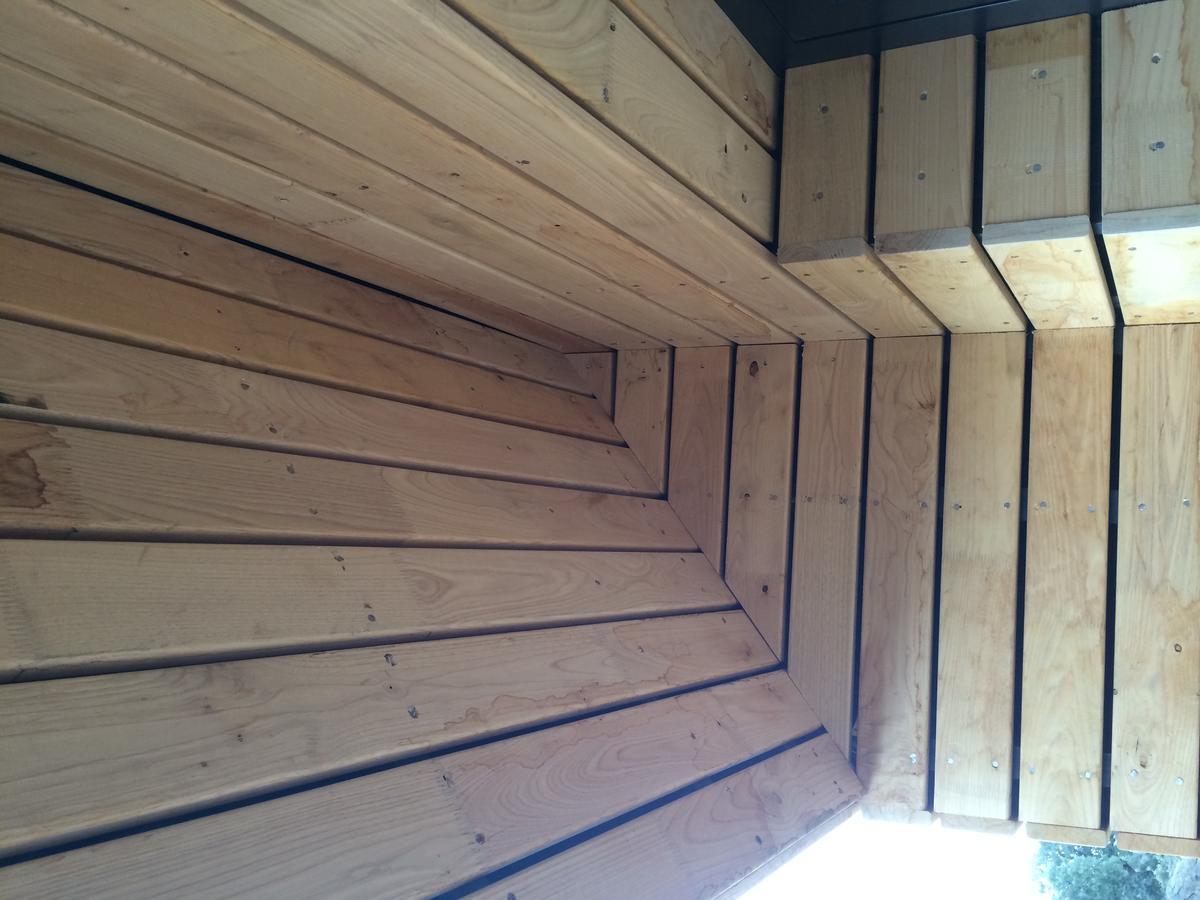
Sierolam S.A.
Los Cuetos, s/n Argüelles, Siero. 33188 Asturias ; 985 742 012
http://www.sierolam.com/
Brushed chestnut wood slats
Wide acceptance by the public and professionals.
Construction and exploitation costs
- 92 943 €
- 92 943 €
Urban environment
The building is in a meadow of oaks with livestock use of 11 hectares, located about two kilometers from the center of the town of Muñogalindo.
Land plot area
110 000,00 m2
Built-up area
64,00 %
Parking spaces
There is no public parking in the pasture to avoid the impact that the infrastructure and vehicles might cause to the environment and the artistic work. An access road has benn conditioned taking advantage of an existing easement step for access of workers of the Foundation, supply, maintenance and emergency equipment.
Building Environmental Quality
- comfort (visual, olfactive, thermal)
- renewable energies
- integration in the land
- building process
Reasons for participating in the competition(s)
Edificio sostenible de bajo consumo energético dentro de un proyecto global basado en la sostenibilidad, en sus tres aspectos habituales (medioambiental, social y económico) y con una importancia especial del aspecto cultural.Construcción en prefabricada en madera, construida en taller y montada in situ, con envolvente continúa de madera de castaño sin tratamiento químico, para que envejezca de forma natural. Edificio autosuficiente energéticamente, que usa las energías locales disponibles: el sol mediante los paneles fotovoltaicos que le dotan de electricidad y la biomasa de la dehesa que se usa como combustible para calefacción.Building candidate in the category

Low Carbon






